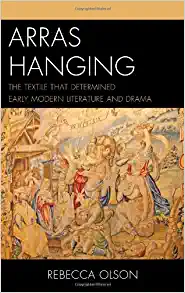
Rebecca Olson
Hardback
September 2013 • ISBN 9781644530665 • $102.95
Paperback
September 2013 • ISBN 978-1-64453-067-2 • $50.00
* E-Book Available
Order Online
Textiles have long provided metaphors for storytelling: a compelling novel “weaves a tapestry” and we enjoy hearing someone “spin” a tale. To what extent, however, should we take these metaphors seriously? Arras Hanging: The Textile That Determined Early Modern Literature and Drama reveals that in the early modern period, when cloth-making was ubiquitous and high-quality tapestries called arras hangings were the most valuable objects in England, such metaphors were literal. The arras in particular provided a narrative model for writers such as Edmund Spenser and William Shakespeare, who exploited their audience’s familiarity with weaving to engage them in highly idiosyncratic and “hands on” ways. Specifically, undescribed or “blank” tapestries in the period’s fiction presented audiences with opportunities to “see” whatever they desired, and thus weave themselves into the story. Far more than background objects, literary and dramatic arras hangings have much to teach us about the intersections between texts and textiles at the dawn of print, and, more broadly, about the status of visual art in post-Reformation England.
About the Author
Rebecca Olson is Associate Professor in the School of Writing, Literature, and Film at Oregon State University. Her ongoing research interests include word and image studies, early modern material culture, and Tudor poetry and drama.

